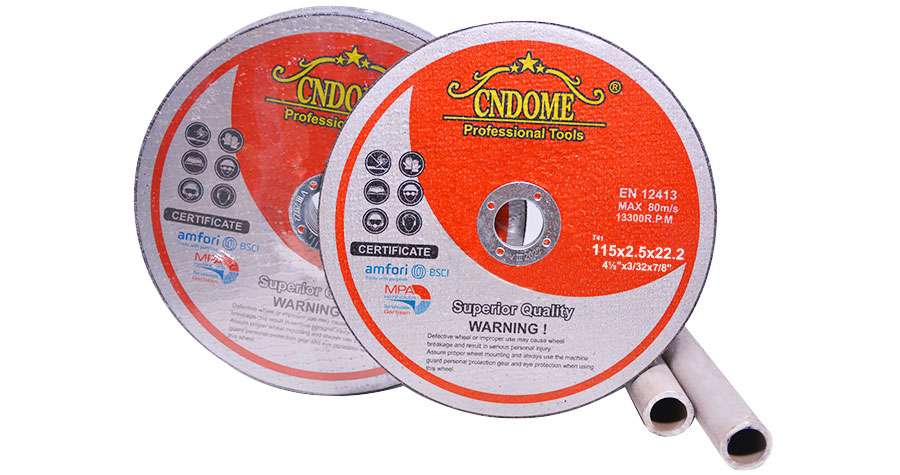Why Thickness Matters
When it comes to cutting discs, particularly the 115mm variety, one size does not fit all. The thickness of a cutting disc is a crucial factor that affects its performance, durability, and suitability for specific tasks. Whether you’re a professional tradesperson or a DIY enthusiast, understanding the differences Thickness of 115mm cutting discs can help you make informed choices for your cutting needs.
- Cutting Speed: Thinner discs cut faster because they remove less material, which means less resistance and heat buildup. This makes them ideal for tasks requiring speed and precision, such as cutting sheet metal or thin-walled pipes.
- Precision: Thinner discs offer greater precision, making them perfect for tasks where a clean, accurate cut is essential. They’re less likely to cause damage to the surrounding material, which is particularly important in delicate or detailed work.
- Durability and Longevity: Thicker discs are generally more durable and have a longer lifespan. They can withstand more pressure and are less likely to break or wear out quickly. This makes them suitable for heavy-duty tasks, such as cutting through thicker metal or hard materials like stainless steel.
- Heat Dissipation: Thicker discs tend to handle heat better, reducing the risk of overheating, which can cause warping or discoloration in the material being cut.
Common Thicknesses of 115mm Cutting Discs
- 1mm to 1.6mm: These are considered ultra-thin discs and are perfect for tasks that require precision and speed. They are ideal for cutting thin metal sheets, aluminum, and other light materials. Due to their thinness, they produce less dust and noise, and they require less power from the cutting tool.
- 2mm to 2.5mm: These medium-thickness discs offer a balance between cutting speed and durability. They are versatile and can handle a wider range of materials, including thin to medium-thickness metal and plastic. They are a good choice for general-purpose cutting.
- 3mm to 3.2mm: These thicker discs are designed for heavy-duty cutting. They are robust and can cut through thicker materials such as stainless steel, cast iron, and reinforced concrete. Their durability makes them suitable for industrial applications and prolonged use.
Choosing the Right Thickness
- For Thin Materials: Opt for a 1mm to 1.6mm disc. These will provide the cleanest cuts with minimal material loss.
- For Versatile Use: A 2mm to 2.5mm disc is a good all-rounder. It offers a balance between speed and durability, making it suitable for a variety of tasks.
- For Heavy-Duty Cutting: Go with a 3mm to 3.2mm disc. These are built to withstand tough conditions and can cut through thick and hard materials with ease.
Safety Considerations
Using the correct disc thickness is not just about performance—it’s also about safety. Thinner discs are more prone to breaking if used incorrectly or on materials they are not designed for. Always ensure that the disc you choose matches the material and the task at hand. Additionally, always wear appropriate safety gear, including goggles, gloves, and hearing protection, to protect yourself from debris and noise.
Conclusion
Understanding the importance for the differences thickness of 115mm cutting discs can greatly enhance your cutting efficiency and safety. Whether you’re working on a delicate project or tackling a robust job, choosing the right 115mm cutting disc will make a significant difference. Keep in mind the material you’re cutting, the desired precision, and the durability required to select the perfect disc for your needs. With the right disc, your cutting tasks will be smoother, faster, and safer.



